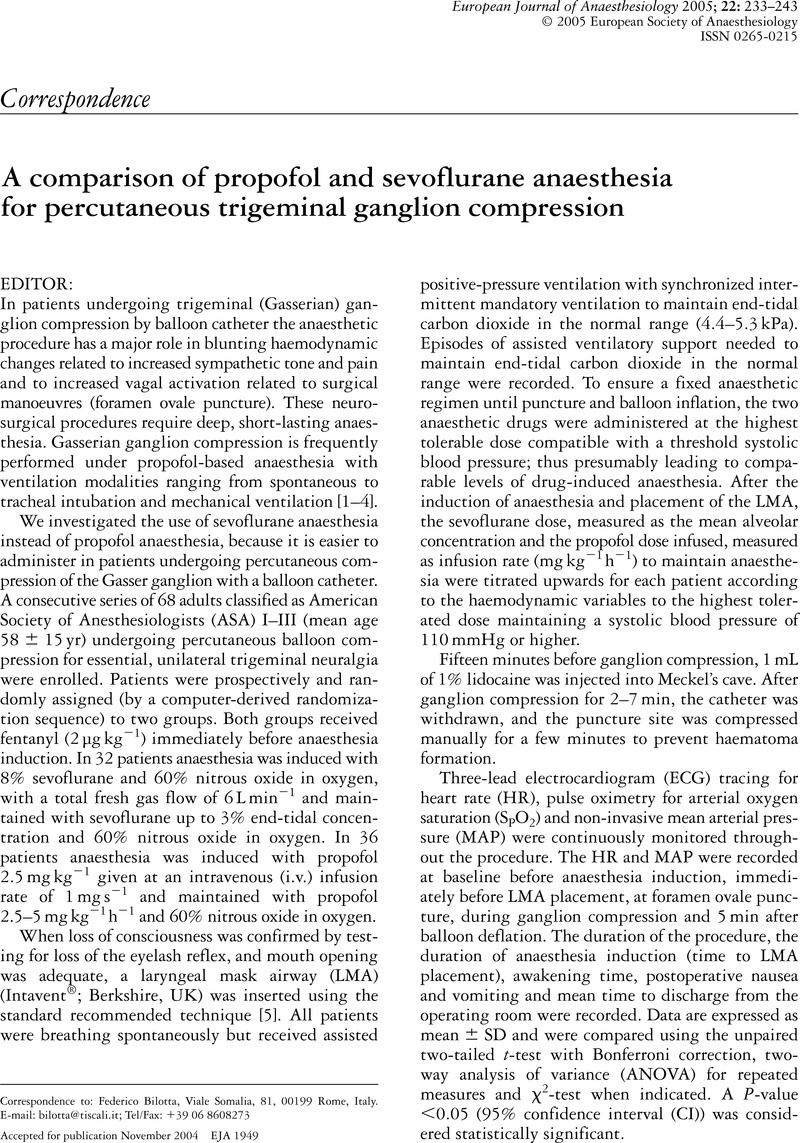No CrossRef data available.
Article contents
A comparison of propofol and sevoflurane anaesthesia for percutaneous trigeminal ganglion compression
Published online by Cambridge University Press: 19 April 2005
Abstract
An abstract is not available for this content so a preview has been provided. Please use the Get access link above for information on how to access this content.

- Type
- Correspondence
- Information
- Copyright
- 2005 European Society of Anaesthesiology
References
Sweet WH, Poletti C, Robert J. Dangerous rises in blood pressure upon heating of trigeminal rootlets; increased bleeding times in patients with trigeminal neuralgia. Neurosurgery 1985; 43: 843–844.Google Scholar
Brown JA, Preul MC. Trigeminal depressor response during percutaneous microcompression of the trigeminal ganglion for trigeminal neuralgia. Neurosurgery 1988; 23: 745–748.Google Scholar
Lobato RD, Rivas JJ, Sarbia R. Percutaneous microcompression of the gasserian ganglion for trigeminal neuralgia. J Neurosurg 1990; 72: 546–553.Google Scholar
Skirving DJ, Dan NG. A 20-year review of percutaneous balloon compression of trigeminal ganglion. J Neurosurg 2001; 94: 913–917.Google Scholar
Brimacombe J, Brain AIJ, Berry A. The Laryngeal Mask Airway Instruction Manual. Henley-on-Thames: Intavent Research, 1996.
Thwaites A, Edmonds S, Smith I. Inhalation induction with sevoflurane: a double-blind comparison with propofol. Br J Anaesth 1997; 78: 356–361.Google Scholar
Bilotta F, Fiorani L, La Rosa I. Cardiovascular effects of intravenous propofol administered at two infusion rates: a transthoracic echocardiographic study. Anaesthesia 2000; 56: 1–6.Google Scholar


